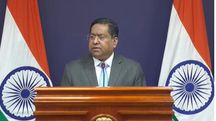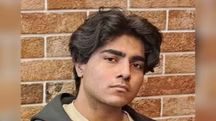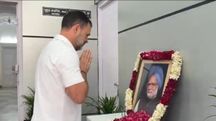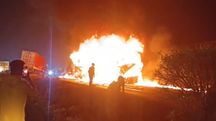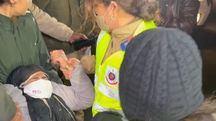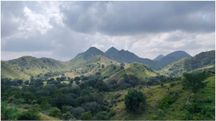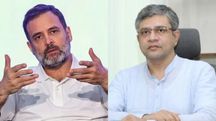What is Pradhanmantri Sangrahalaya or museum on Indian Prime Ministers, all you need to know
The Pradhanmantri Sangrahalaya is a homage to every Prime Minister of India since Independence, as well as a narrative record of how each one has contributed to the nation's growth over the previous 75 years.
 What is Pradhanmantri Sangrahalaya or museum on Indian Prime Ministers
What is Pradhanmantri Sangrahalaya or museum on Indian Prime MinistersThe Pradhanmantri Sangrahalaya is a homage to every Prime Minister of India since Independence, as well as a narrative record of how each one has contributed to the nation's growth over the previous 75 years.
It is a narrative of joint endeavour and overwhelming proof of India's democratic achievement.
Our Prime Ministers came from every social class and rung since the doors of democracy were open to all. Each of them left a significant imprint on the road of progress, social peace, and economic empowerment that has enabled India to redefine freedom. We inherited an impoverished land from the wreckage of British colonialism and gave it new life, transforming our country from hungry deprivation to food abundance, and building infrastructure over desolate terrain for the benefit of the people.
Because this is a narrative of continuity, the Teen Murti Estate, which was home to India's first Prime Minister Jawaharlal Nehru for 16 years, was the appropriate setting for Pradhanmantri Sangrahalaya.
The Sangrahalaya is a seamless mix that begins with the restored and remodelled Nehru Museum building, which now has totally updated and technologically enhanced exhibitions of Jawaharlal Nehru's life and contributions. The new panorama contains a part that displays a significant number of unusual items that he got from all around the world but never shown.
The story of contemporary India begins with the war for independence and the creation of a magnificent constitution. The Sangrahalaya then tells the account of how our prime ministers guided the country through numerous hurdles and guaranteed the country's overall prosperity. There is a lesson for the younger generation in this story: there are larger vistas to explore as we convert India into a new India.
Taking to his Twitter handle, Assam CM Himanta Biswa Sarma wrote, "Salute Hon PM @narendramodi ji’s statesman-like vision of creating the most thoughtful public space to honour equally the contribution of all former Prime Ministers irrespective of political affiliations. The state-of-the-art PM Sangrahalaya is a must-see for every Indian."
Salute Hon PM @narendramodi ji’s statesman-like vision of creating the most thoughtful public space to honour equally the contribution of all former Prime Ministers irrespective of political affiliations
— Himanta Biswa Sarma (@himantabiswa) March 20, 2023
The state-of-the-art PM Sangrahalaya is must-see for every Indian
Thread
1/ pic.twitter.com/a8qtPcYdKZ
The Pradhan Mantri Sangrahalaya is no less than a constitutional pilgrimage. This museum is emblematic of the most inclusive and democratic approach ever taken in monument building, which is a reflection of Hon PM’s magnanimous and liberal vision.
For the first time, every former Prime Minister- no matter how long or short his or her tenure was - has been revered and honoured rather than those from just one family.
There’s a detailed gallery dedicated to Pt Jawarharlal Nehru.
Further one can find the original copy of Tryst with Destiny speech, pictures of the Mountbatten family, books & other paraphernalia of the former PM, illustrations of several of his policies, including the 1962 Sino-Indian war, his concern over the destruction of mosques during Partition.
Gulzari Lal Nanda, a lifelong Congressman, served twice as India’s Prime Minister but for the first time, I came across a public museum honouring his role in nation-building, particularly the pivotal role he played in building INTUC and the restoration of Kurukshetra.
The section dedicated to Lal Bahadur Shastri –architect of the 1965 victory and Green Revolution-brings to life so many of his lesser-known qualities, like he accepted only a Charkha from his in-laws during his wedding, allowing women bus conductors as UP’s Transport Minister.
Indira Gandhi’s gallery gives a nuanced insight into her tenure –Pokhran 1, 1971 war, handling of the refugee crisis, bank nationalisation and democracy’s darkest chapter; Emergency. Was pleasantly surprised to see JP Narayan ji’s letter to her seeking to ban cow slaughter.
The gallery on our 4th PM, Morarji Desai, 1st non-Congress PM, was eye opening. I learnt that he began his career as a DC. His short tenure that saw some pivotal decisions like commitment to freedom of press has been beautifully encapsulated.
One can also see Morarji Desai’s personal artefacts such as his Tulsi Mala and Bhagavad Gita.
Further, it was enriching to learn about his policies such as engaging with Israel, and promoting Yoga and Ayurveda.
Chaudhary Charan Singh ji, the great farmer leader, served briefly as PM, but I was glad to see his contribution acknowledged.
Got an opportunity to learn about his role in eradicating zamindari,his warning to Pakistan and how he was inspired by Swami Dayanand Saraswati.
The museum provides an informed perspective on Rajiv Gandhi’s tenure devoid of propaganda.
From Technology Revolution to the Ganga Action plan, his efforts in reducing insurgency, all his policies are well researched and highlighted.
There was a lot to learn from VP Singh's gallery, particularly his efforts in ensuring social justice through the Mandal Commission and his notable efforts to fight corruption. The reasons behind the fall of his government are also well explained.
Chandra Shekhar had a short tenure but has been prominently featured, including his 2000-km Bharat Yatra to connect with the masses and the crucial role his government had played in overcoming the economic crisis.
Glad to see a gallery dedicated to PV Narasimha Rao, who in death was denied a resting place in Delhi by his party. His early life and political career, and astute foreign and economic policies are brilliantly captured. It was kind of his family to donate personal artefacts.
There is so much to learn from the hall dedicated to Deve Gowda, the son of the soil who became Prime Minister.
The Pradhan Mantri Sangrahalaya does immense justice to the tenure of IK Gujral. We get to know about his extremely scholarly background, his role in a Salt Satyagraha campaign in Jhelum and his now well-known doctrine in foreign policy.
Vajpayee’s section is mesmerising. There’s a sense of pride to learn about his pracharak days, Pokhran 2, the victorious Kargil War, his contribution in curbing terrorism, huge reforms in telecom, disinvestment and infra. The video of his Hindi speech in the UN is truly inspiring.
The gallery showcasing Dr Singh’s tenure brought back memories as I personally met him on many occasions as he was an MP from Assam. His humble life, loss of his relatives during partition, stellar role in the nuclear deal and his efforts in RTI, and MNREGA are well illustrated.
Copyright©2025 Living Media India Limited. For reprint rights: Syndications Today

